Hi, everyone. How do you do? I’m Satoru Sakai, the director and game planner of Ace Attorney Investigations Collection. I know that many of you have been hoping for a port of the Investigations series, and I’m sorry for the long wait. But with the game’s release back on September 6th, we were finally able to bring an updated Edgey-poo to you all. What a load off of my shoulders now that everything is done!
I grew up in the Game Boy Advance era of games, so it was a real joy for me to come in every day and work on the port of an Ace Attorney game – a series I’d been hooked on as a child. I also felt a lot of pressure to do right by a classic like Ace Attorney Investigations: Miles Edgeworth.
I hope everyone will love what we’ve done, including the visually upgraded Edgey-poo, as much as I do.
Now then, I have never written anything like a dev blog before, so I had a tough time coming up with what I should write about. I figured our art director and our localization director would each cover our graphics production process and localization-related issues, respectively, so…
I guess I’ll talk about the development.
It’s true that the two titles included in the Investigations Collection are ports, but we also figured that this would be a lot of people’s first time experiencing them too, so this is what the producer tasked me with:
“This may be a port, but I don’t want it to just be a carbon copy of the original games. I want it to be something that looks and feels like a modern game. I want to do something about the things that cause players stress so that they can play it with minimal frustration through to the end.”
Basically, he wanted not just the obvious visual upgrades, but also, features that would be expected of any game being produced in the modern era.
And so, as this collection’s director and lead planner, I’d like to walk you behind the scenes of the development of Investigations Collection – from what features we added to the Nintendo DS and smartphone versions to the new UI design – and share with you some of our thought process.
First up is the very first thing you see when you start the game – the Title screen.
Title Screen
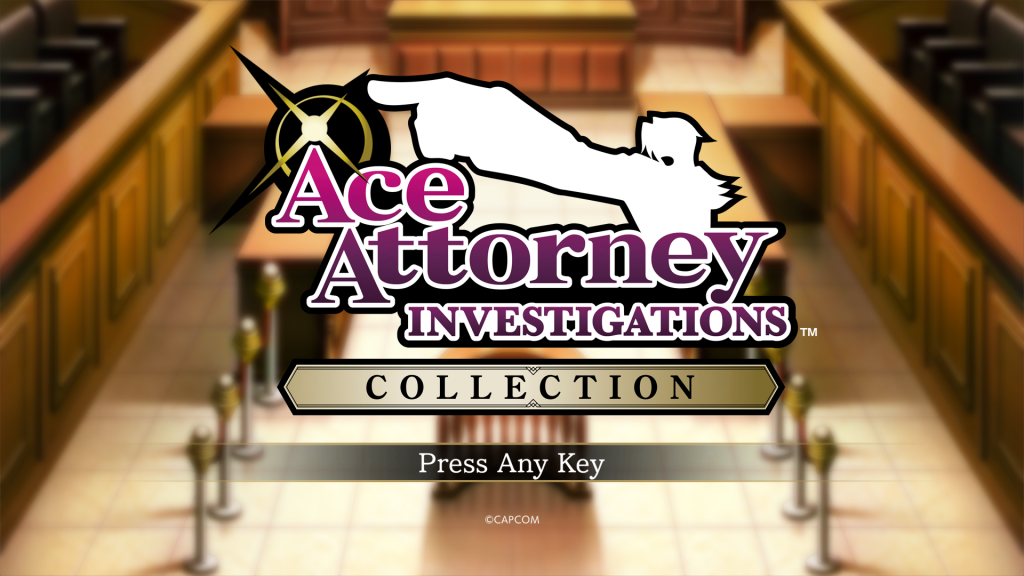
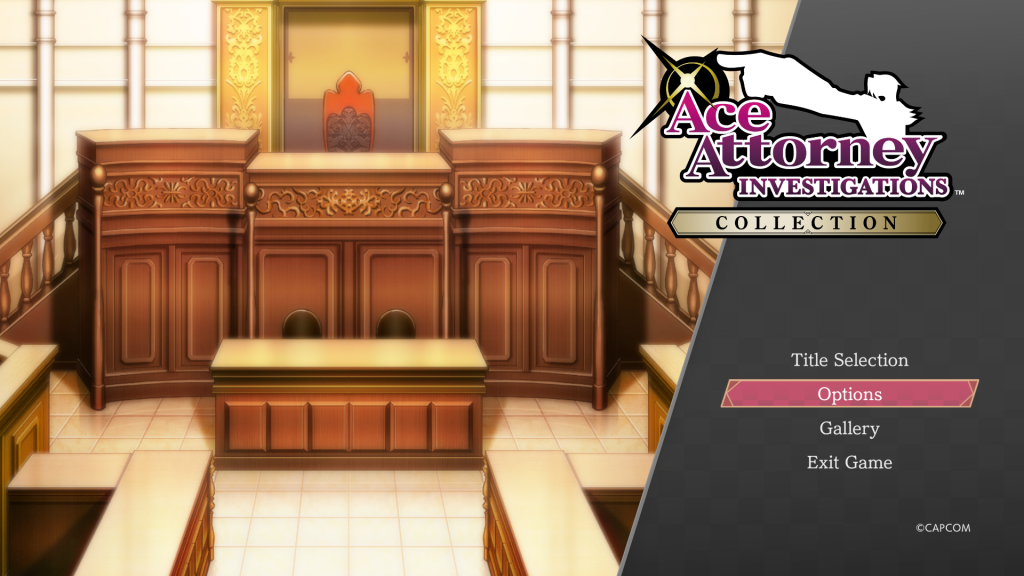
When you first boot up Ace Attorney Investigations Collection, you’ll be greeted with a background picture featuring the courtroom and the main menu. Because this is where you’ll take off into the two games from, we called this the Launcher screen internally.
As a little bit of fun, we decided to have the background change according to your save file as you progress through the game. (There was a similar feature in The Great Ace Attorney Chronicles, which showed you the 3D location background of your most recent save file.)

Since the Title screen is something new for Investigations Collection, it exists as a separate entity from the main games. That’s why I wanted to make it feel a little more connected to the games themselves by creating even the slightest link between the Title screen and what’s going on in the story as you play.
But the background doesn’t change just once per episode – it actually changes all throughout. So, I recommend that you try saving in all sorts of places. I think you’ll find our selections to be quite interesting!
(Games that make small changes to their Title screen when you return to it or after you’ve finished the game are great, aren’t they?)
The pictures we used are from a variety of locations, including background maps and story illustrations. But it would’ve been boring to use them as is, so the designers added some lighting and other special effects to make them look extra good. For example, if you let the courtroom background scroll for a bit, you’ll notice that it looks like there’s sunlight pouring in from above. We added these kinds of custom special effects to each and every background on the Title screen.
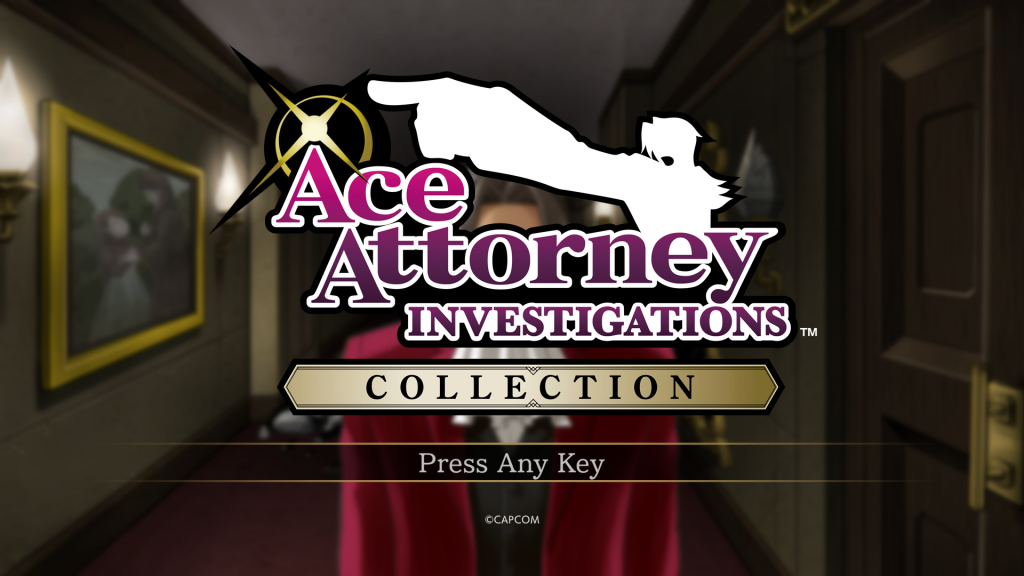 My favorite is the one for AAI: ME, Episode 3. Of course it is.
My favorite is the one for AAI: ME, Episode 3. Of course it is.
Also, the song playing on this screen is a new piece that was composed just for Investigations Collection!
About the Background Music
The title screen music is a track called “Prelude to Pursuit – Search for the Truth”.
The sound team really outdid themselves with this piece that not only sounds cool and uses phrases from the Pursuit themes of both games, but also brings out Edgey-poo’s outward coolness and hidden inner passion! As someone who loves the Pursuit themes, I absolutely adore this new track. But it’s not just this one track – all of the new arrangements are amazing and I kept listening to them on loop as I worked. Thank you so, so much, sound team!
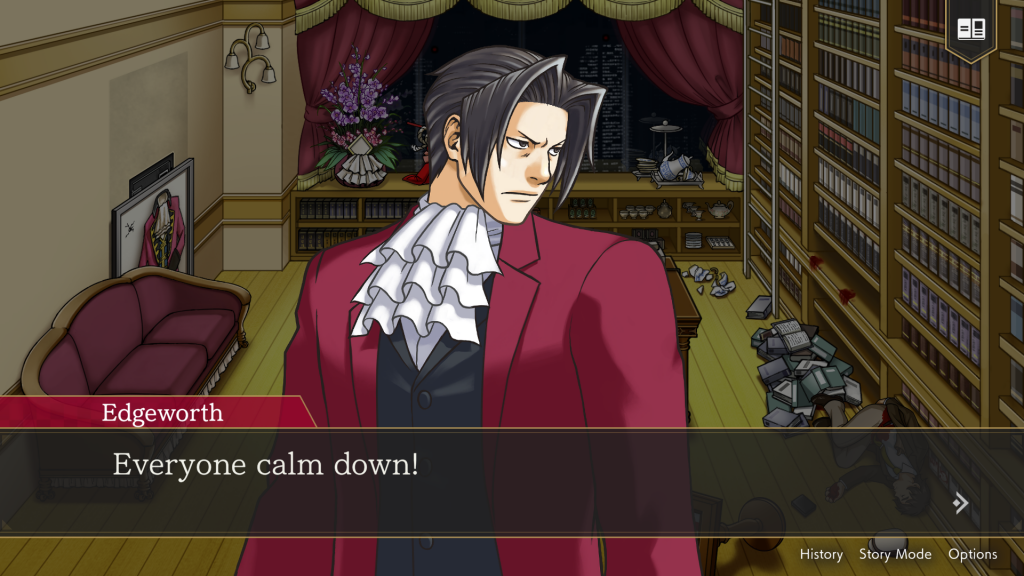 Yes, sir.
Yes, sir.
We had originally suggested that a blended arrangement of “Miles Edgeworth – Objection! 2009” and “Miles Edgeworth – Objection! 2011” be the Title screen track, but both of those pieces are based off of “Triumphant Return – Miles Edgeworth”. And since there are so many arrangements of those pieces already, we decided to go with the Pursuit themes as the basis this time around.
Now it’s time for our next segment – a look at the new useful features we added to Investigations Collections.
Useful Features
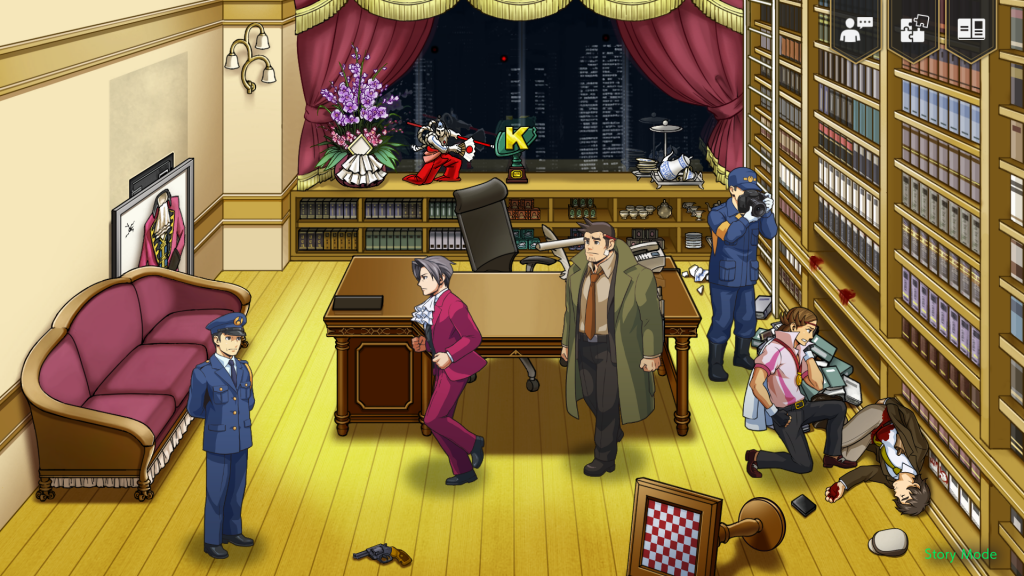 And here we have an Edgeworth on autopilot.
And here we have an Edgeworth on autopilot.
Story Mode
The Story Mode feature was also in The Great Ace Attorney Chronicles and Apollo Justice: Ace Attorney Trilogy, so some of you may already be familiar with it. Basically, it’s a feature that will automatically solve all the puzzles and progress the story for you. It was so well received in the past that we just had to implement it in Investigations Collection as well. Use it when you get stuck during a Logic or Confrontation part, or use it to simply enjoy the story! It’s all up to you!
There is one thing I have to come clean on though, and that is that when you turn Story Mode on during an Investigation segment, the game will restart from the beginning of that Investigation segment. This is something we had to do because the player character can move freely about the map, and making the game automatically control the character correctly was an incredibly tough thing to pull off.
You could say it’s me being very particular about it, but if you’ll lend me an ear, I will tell you how much of a struggle we had…
There was a time in the middle of development when, depending on where you were standing when you turned Story Mode on during an Investigation segment, Edgey-poo was unable to correctly maneuver around objects. As a result, he would get caught on things like tables or at corners and then stutteringly run in place… This bug would occur time and time again and was especially easy to trigger on smaller maps and when there were many objects (like tables or NPCs, etc.) around.
Because having him move around the map automatically is a feature that was outside of the original dev team’s expectations, there was only so much the programmers could do to manipulate how the game processed things internally… Furthermore, the amount of testing we would’ve needed to do to ensure that Edgey-poo wouldn’t get caught on anything by placing him on every conceivable spot on every applicable map was just unrealistic. My team and I tried to come up with all sorts of different ways to implement the feature, but with the limits of the budget and time we were given, we settled on the implementation you see in the final version of the game. It was a really hard decision to make, and it’s something I still have a few regrets about.
(By the way, you can also read about the struggles director and planner Mr. Kougou faced when implementing this feature in The Great Ace Attorney Chronicles on his blog entry. It sounds like he and his team also had a rough time of it…)
Check Mark on Things You’ve Already Examined
During Investigation sections, as Edgey-poo approaches something that can be examined, a little speech bubble will appear above his head. This was implemented to make it easier to see what is examinable. In the Nintendo DS and smartphone versions, the only way you could tell if something was examinable or not was if a button came swooshing out of hiding from the bottom right of the screen. But this time, we knew that people would be able to play these games on large screens and in full HD, so we figured it would be better to place a bubble closer to the character you were controlling, thereby reducing the distance your eyes would have to move as well.
In addition, we made it so that anything you’ve finished examining would get a little check mark on it. Furthermore, if something should change in the course of your investigation, the little check mark would disappear to let you know that there’s something new to discover if you examine that item again. Compared to the mainline games, there are more instances in the Investigations series where an object needs to be examined more than once, so while this feature may seem boring and insignificant, it’s actually quite an important one!
(Because of the “examine the same place multiple times” gameplay, there were a ton of bugs related to this check mark feature. I even have a story about something that we had a really tough time with, but I think I’ll save that for some other time…)
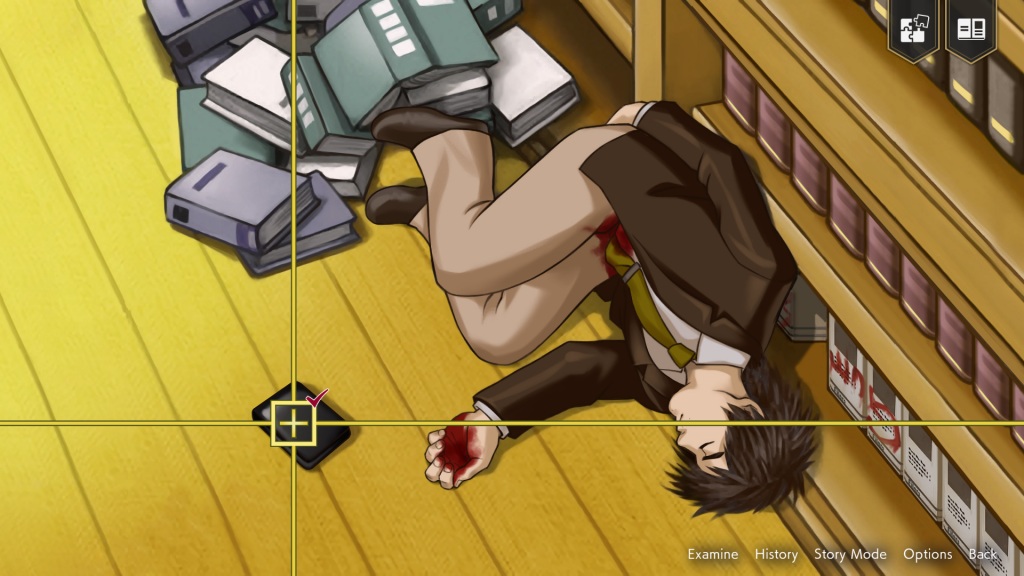 We even put check marks on the cursor for when you examine 2D scenes!
We even put check marks on the cursor for when you examine 2D scenes!
And that about covers the useful features, I think. Lastly, let’s take a peek at the gallery.
Gallery
The gallery contains Accolades, in-game illustrations, and character animations. In addition, we’ve included some documentation from the Nintendo DS version’s development and even orchestral arrangements for you to listen to.
But before we start…
There are spoilers for the main games in the in-game gallery itself, so if you haven’t finished the games yet, please be careful before heading in! I mean it!
I know I’m sidetracking a little here, but dialogue boxes will pop up in locations other than the gallery, too, to alert you to the presence of spoilers. While the games are more than ten years old, Ace Attorney is one of those series where I really want everyone to enjoy the story and the tricks behind each mystery. I didn’t want people to accidentally spoil themselves on who the real culprit is ahead of time, so while I know the boxes might be annoying when they pop up, I hope you’ll bear with them!
In fact, we took care not to spoil anything as we made things like promotional trailers, as well.
(I say that, but I had absolutely no qualms about showing the rascal you see the instant you start up the game all over the place, though.)
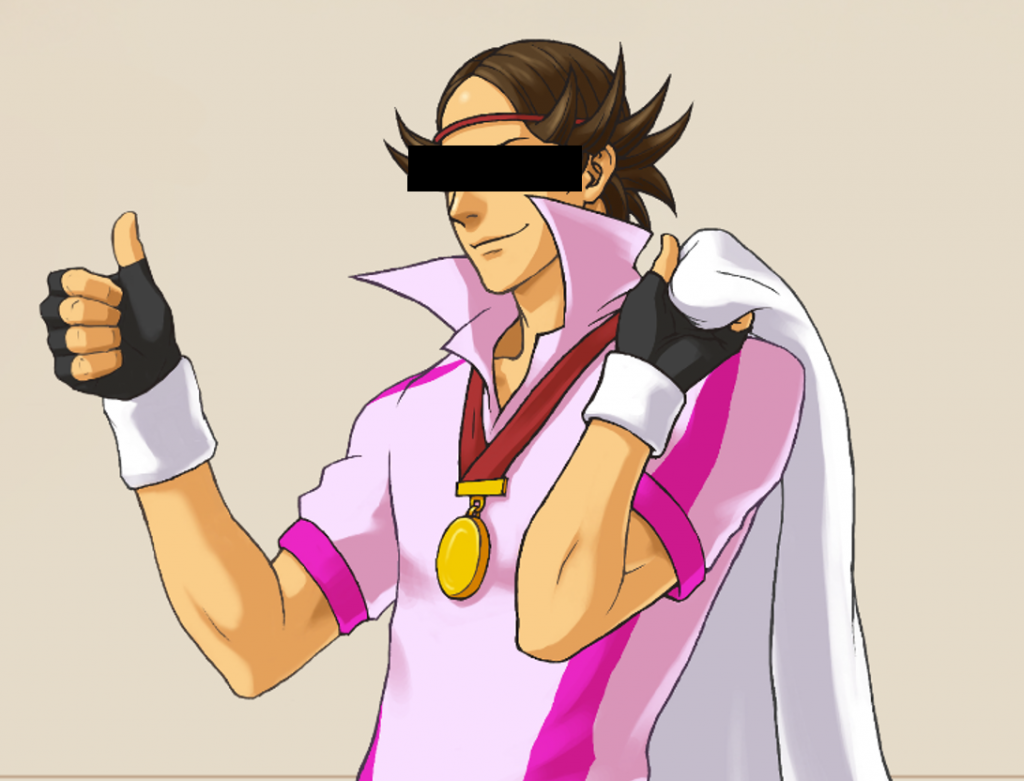 I’m talking about you, buster.
I’m talking about you, buster.
Gallery Screen
We wanted to give a hand-drawn, vintage feel to the overall design of the gallery. It’s a little different from the Art Deco taste of the UI design in the main game, though, isn’t it? We based the direction of the design off of the jacket illustration of the first game’s orchestral mini soundtrack, which we received from the producer.
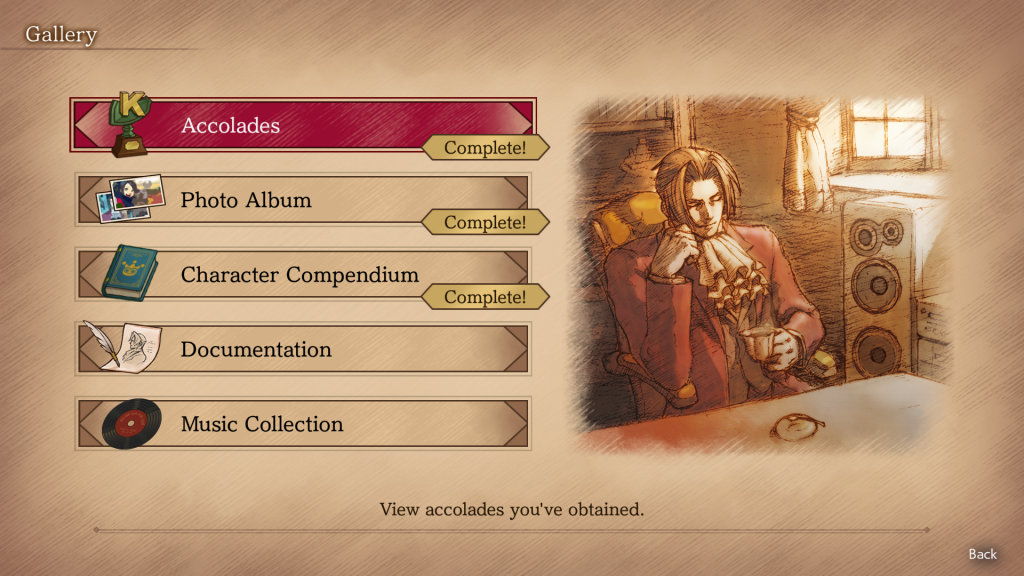 That exact image is also on the right-hand side of the Gallery screen.
That exact image is also on the right-hand side of the Gallery screen.
He really is handsome here, isn’t he?
■ Character Compendium
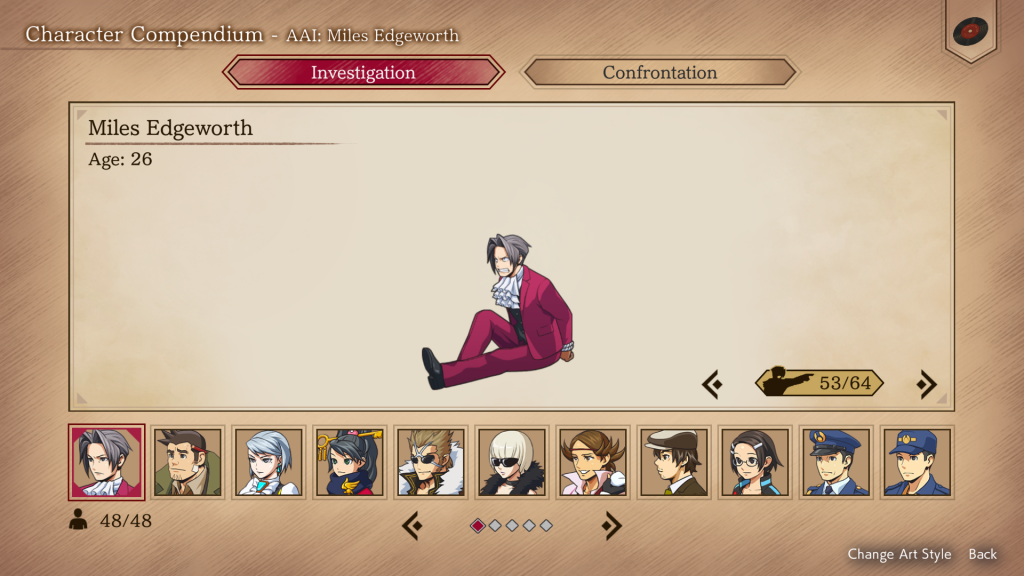 Edgey-poo with his hands tied behind his back!
Edgey-poo with his hands tied behind his back!
Edgey-poo lying flat on his face! Wow!
The Character Compendium is where you can view each character and their animations – even those that were only used once in the games – as many times as you’d like.
The chibi characters this time around, and especially the ones in the HD art style, are of higher quality than ever before thanks to the art designers’ hard work. (To all the designers, I can’t thank you enough…!) Because you can see each character’s full body design in the Compendium, you might even spot something you would never be able to otherwise because it was being blocked or covered up by something in the main game. So, I hope you’ll give them more than just one quick look!
We included every character we could, but there were a few we couldn’t due to how their animations are put together. I really regret not being able to include Edgey-poo sliding down a pole…
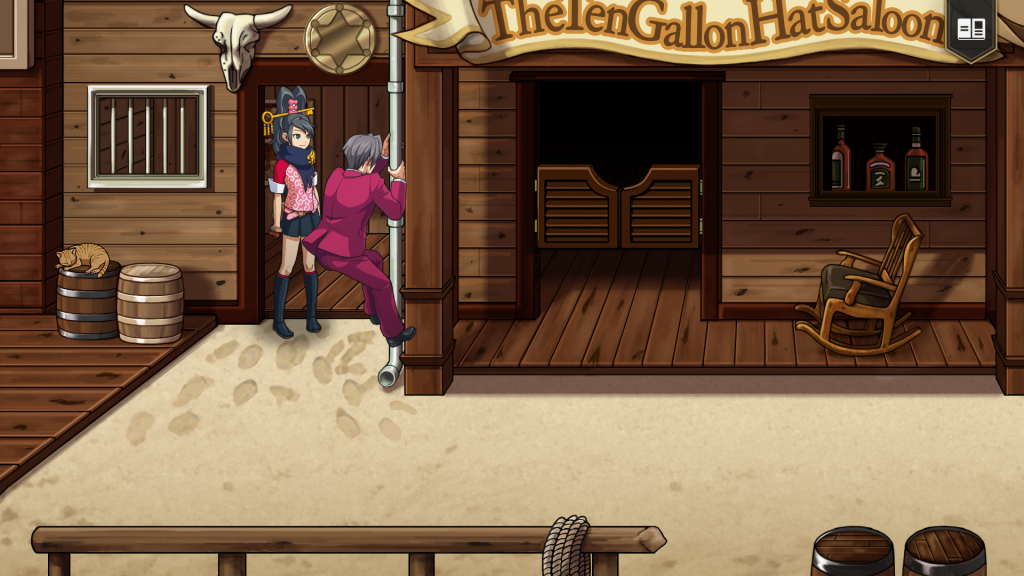 I’ll just put this here so we can look at it whenever we want.
I’ll just put this here so we can look at it whenever we want.
Sorry, Edgey-poo.
■ Documentation
In the Documentation section, we’ve included some of the most interesting rough sketches Mr. Iwamoto drew during the original Nintendo DS version’s development.
There’s sure to be a few that will make you say, “Who the heck is that!?” and there are sketches that outline in great detail how certain motions were to be animated, among other things. From his sketches, you’ll see just how much trial and error went into each character before they reached their final version. You’ll also see a few of Mr. Iwamoto‘s random doodles here and there, so if you’re a fan who is dying to catch a glimpse of Mr. Iwamoto’s playful side, you’ve really got to check these out!
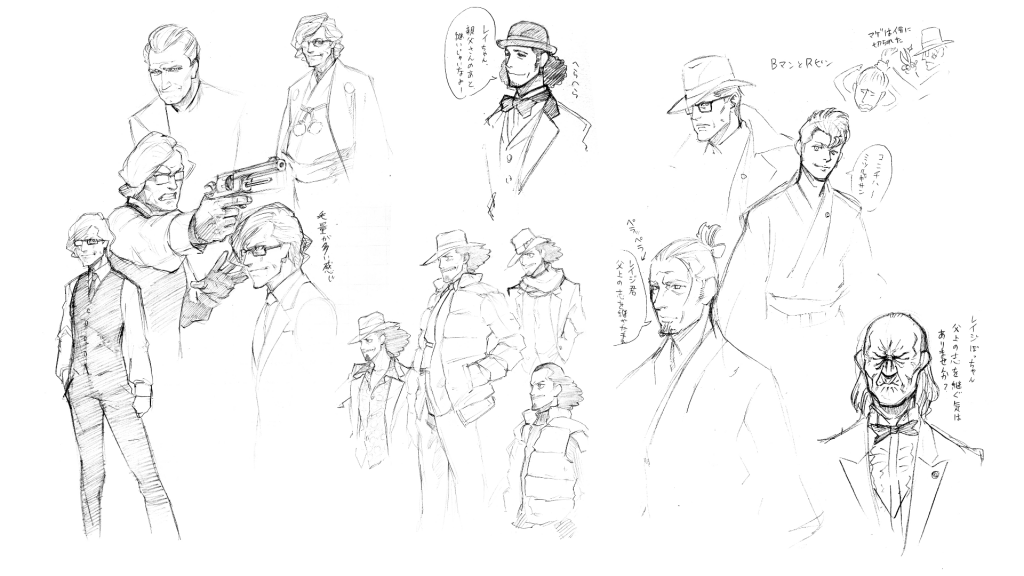 I recommend this page that shows a bunch of sophisticated-looking middle-aged gentlemen
I recommend this page that shows a bunch of sophisticated-looking middle-aged gentlemen
who are trying to push Edgey-poo into following in his father’s footsteps
(so they’re probably all of Fender).
In Conclusion
If you’ve made it this far, thank you for reading! There is so much more I want to share, but I’ve written too many words already, so I’ll have to call it a day here for now! With this revival of the Investigations series 15 years later, I sincerely hope that this collection will inspire more people to become fans of Miles Edgeworth, or “Edgey-poo”. See you all later!
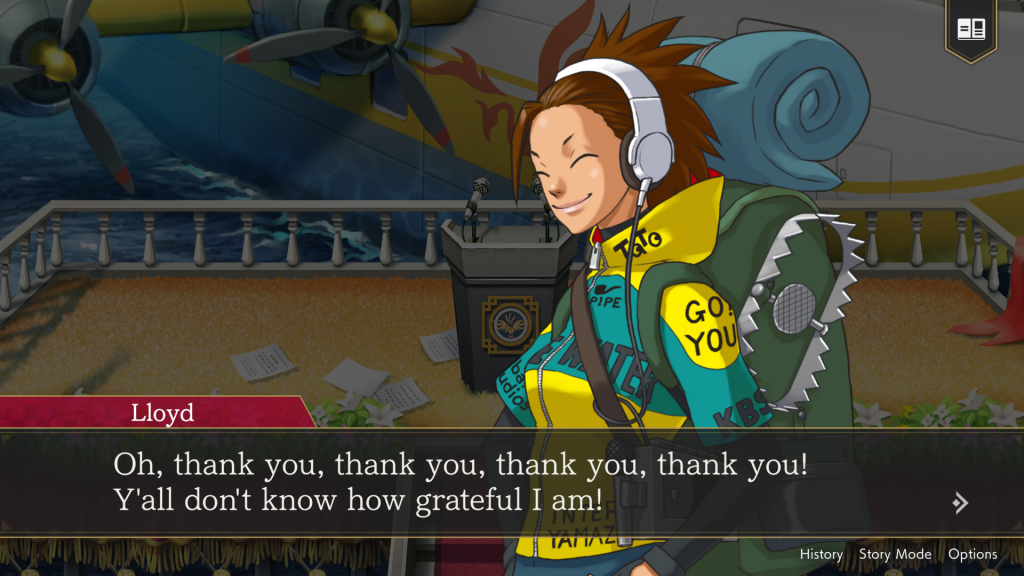

Hello, I’m Shunsuke Nishida, the producer of AAIC. As this is the last blog post, I’d like to leave a brief message here.
Throughout this year, I had secretly wanted to make 2024 the year of “Edgeworth Fes”, and I had intended to highlight him in multiple ways. Part of my goal was achieved through special collaborations, wonderful T-shirt designs, and other original merchandise (although some of them were available only in Japan). But you completed it with your numerous pieces of commemorative fan art, lovingly assembled in-store displays, and even a handmade diorama I saw on social media. I was totally astonished!
I really appreciate everyone involved on this project and all of you fans who have supported the Ace Attorney series to this day. If you’ve read this far, I’m guessing you have already played AAIC, but I hope you will enjoy all that AAIC has to offer!




























































































